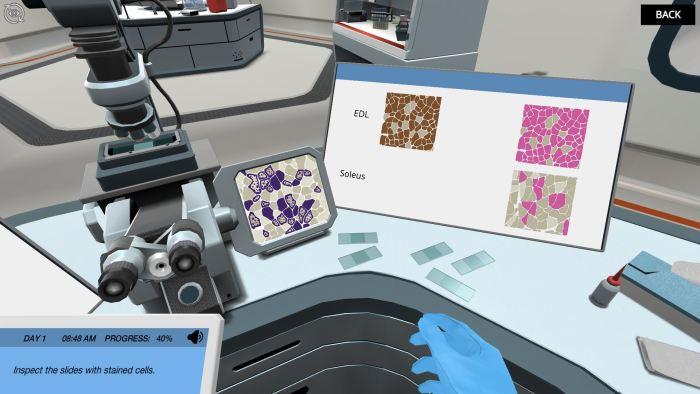
The human body is a marvel of biological engineering and at the heart of its intricate functioning lies a network of muscles that serve as the driving force behind our every movement and physiological processes. Muscles are not merely passive structures; they are dynamic tissues with distinct characteristics, functions, and roles.
Delving into the realm of muscle physiology uncovers lots of complexities from the diverse array of muscle tissues, including skeletal, smooth, and cardiac, each tailored for specific purposes, to the microscopic examination of individual muscle cells. As we journey through the scientific landscape of muscles, we unravel the enigma of their arrangements, functions, and contributions to the harmonious operation of the human body.
To help educators plan well-organized lectures on the subject, we have compiled some resources here. The underlisted 5 innovative ways can be a game-changer for you and your students.
In essence, simulative learning transcends traditional teaching methods by infusing scientific aptitude with innovation. By providing a virtual platform for students to navigate muscle intricacies, educators can empower students to forge meaningful connections between theoretical muscle physiology concepts and real-world scenarios.
Interactive models and Labster’s set of 4 simulations can be used in different ways:

By integrating interactive challenging activities and thought-provoking gamified learning avenues, educators can transform the topic of muscles into a captivating journey of exploration and understanding. By gamifying complex topics like the arrangement of myofibrils in sarcomeres, sliding filament theory, etc, you can seamlessly deliver the underlying conceptual ideas.
Labster employs gamification to transform learning in the Muscle Tissues Virtual Lab. Learners can explore skeletal, smooth, and cardiac muscle tissues’ distribution and functions using interactive 3D holograms. They can delve into cellular levels to compare muscle cells and understand intracellular components. The virtual games are designed to also guide them through muscle cell contraction pathways. Gamified scenarios challenge students to decipher the molecular mechanisms behind muscle contraction. Labster’s approach enhances engagement, facilitating deeper comprehension of muscle physiology and its intricate functions within the human body.

Discover Labster's Skeletal Muscle Movement virtual lab today!
Utilizing technology can enhance classroom learning outcomes for the topic of muscle physiology as it engages learners in interactive environments where intricate concepts can be easily analyzed and understood. You can facilitate in-depth exploration of distinct muscle tissues found within the human body by utilizing advanced software, VR, and AR technologies.
Labster harnesses technology in its Skeletal Muscle Movement Simulation by offering an immersive learning experience. Aspiring students can lead the exploration of the skeletal muscle system by virtually aiding a company in crafting a personalized training app.
Educators can ignite fervor for the intricate world of muscles by forging dynamic connections to real-world applications and career prospects. By unraveling the nuanced intricacies of distinct muscle tissues like skeletal, smooth, and cardiac, students embark on a journey that transcends the classroom.
Educators can also link the complex domain of muscle physiology to its tangible applications in the real world. By seamlessly intertwining the study of various muscle tissues with their specific significance in the human body, learners embark on a transformative journey that goes beyond theoretical knowledge. This immersive approach will not only equip students with a profound understanding of cellular intricacies like myofibrillar arrangements and molecular mechanisms of contraction but will also empower them to envision diverse career paths.
From medical practitioners and sports scientists optimizing performance and rehabilitation strategies to engineers designing advanced prosthetics and researchers unraveling neurophysiological mysteries, the implications of muscle physiology extend into fields as diverse as healthcare, technology, and innovation.
When teaching about muscles, adopting innovative methods holds significant importance. The intricate nature of muscle physiology encompassing distinct tissues, cellular intricacies, and complex mechanisms demands a fresh and engaging approach. By presenting muscle physiology in innovative ways, educators can empower learners to become active participants in their education. Labster supports educators in this endeavor to prepare students to excel in a rapidly evolving world, equipping them with the skills and knowledge needed to contribute meaningfully to the field of muscle physiology and beyond.

Try our free 30-day All Access Educator's Pass today and teach with the Muscles simulation alongside 300+ other virtual labs!

Labster helps universities and high schools enhance student success in STEM.
Request DemoRequest a demo to discover how Labster helps high schools and universities enhance student success.
Request Demo